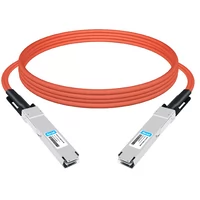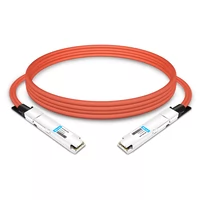The ever-increasing demand for larger bandwidth and faster data transfer is evident in the modern world, which relies heavily on data. The gradual advancement of network infrastructures to meet these demands has led to an innovative interconnect technology – 800G OSFP (Octal Small Form-factor Pluggable) active copper cables. This blog post will discuss the various aspects surrounding 800G OSFP active copper cables, focusing on technical specifications, operational benefits, and use cases in high-performance networking environments. Readers should expect to understand how this state-of-the-art technology enhances digital communication speed and meets requirements in contemporary data centers through its detailed examination.
Table of Contents
ToggleWhat is an OSFP Active Copper Cable?
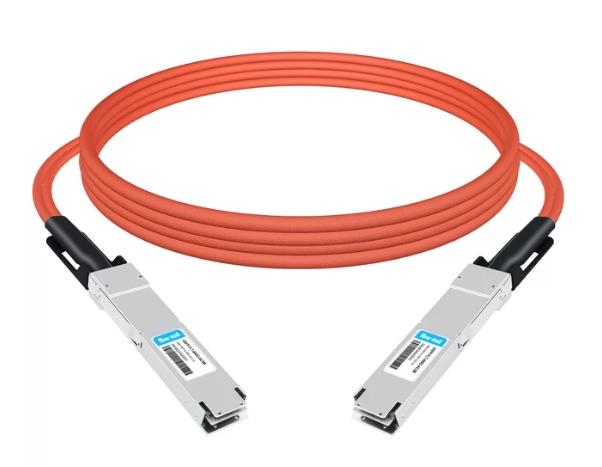
Understanding OSFP
The Octal Small Form-factor Pluggable (OSFP) is a modular interface that supports high-speed data communication, specifically targeting 400G and 800G Ethernet environments. OSFP connectors have eight electrical channels that send data at rates of 25G each, which means they can achieve total bandwidths up to 800G. This form factor is small in size, so it can be used in network switches and routers where space is limited. Low-power electrical signaling is used by OSFP active copper cables to keep signals intact over short or medium distances, thus making them efficient for use as internal data center interconnections. The design also has strong thermal management capabilities built into it to ensure optimal performance under heavy loads of data usage.
Comparing Active vs Passive Copper Cables
Active and passive copper cables serve different functions in high-speed networking architectures. However, they both work for the same purpose. Active copper cables use built-in signal regeneration technology, which helps maintain the integrity of signals over long distances up to 15 meters or more with efficient power consumption management. This feature makes them appropriate for high-bandwidth applications where data integrity is very important.
On the other hand, no electronic components are found in passive copper cables. Only the physical characteristics of the copper conductors are used to transmit data through these types of cable, limiting its effective transmission distance to usually around 7 meters unless configured as high-performance OSFP Infiniband NDR Active Copper cables. Passive wires tend to be cheaper and simpler than active ones. Still, they may have more significant degradation when used over long distances, thus making it less ideal for ultra-fast environments like data centers.
To sum up, whether you should use an active or a passive wire depends on your application requirements; if it needs a longer reach at higher speeds, then go for an active wire. Otherwise, opt for cheaper, more cost-effective solutions, such as passive ones, which work well within short ranges only where less demanding connections exist between devices connected by them.
Key Features of 800G OSFP Active Copper Cables
The demands of modern data centers and networking environments are met by 800G OSFP (Octal Small Form-factor Pluggable) active copper cables. These cables support 800 Gbps data transmission rates over considerable distances—typically up to 15 meters—while maintaining optimal signal integrity. Key features include:
- High Bandwidth Capacity: Engineered to support the increasing bandwidth requirements of data-heavy applications, ensuring efficient data flow without bottlenecking.
- Power Efficiency: Incorporate low-power designs that minimize energy consumption, making them suitable for deployments where operational costs and thermal management are critical.
- Signal Regeneration: Built-in signal regeneration capabilities enable the maintenance of high-quality signal transmission without substantial degradation over longer cable runs.
- Robustness: Constructed with high-quality materials that ensure durability and resistance to environmental factors, contributing to a longer lifespan in dynamic data center conditions.
- Ease of Deployment: Designed for plug-and-play deployment, facilitating rapid installation and easy integration into existing network infrastructures.
Overall, 800G OSFP active copper cables provide an excellent balance of high performance, efficiency, and practicality for contemporary network architectures.
The Evolution of OSFP Active Copper Cable Technology
The development of OSFP active copper cable has been driven by the demand for higher data rates in modern networks. Starting from earlier standards like QSFP, the OSFP active copper cable incorporates advanced signal processing to support 800G speeds while maintaining compatibility with existing infrastructure. This evolution includes improvements in PAM4 modulation and power management, addressing challenges from AI workloads and 5G deployments. At FiberMall, our OSFP active copper cable products evolve with industry standards, ensuring seamless upgrades for your data center needs.
How Does an 800G OSFP Active Copper Cable Work?
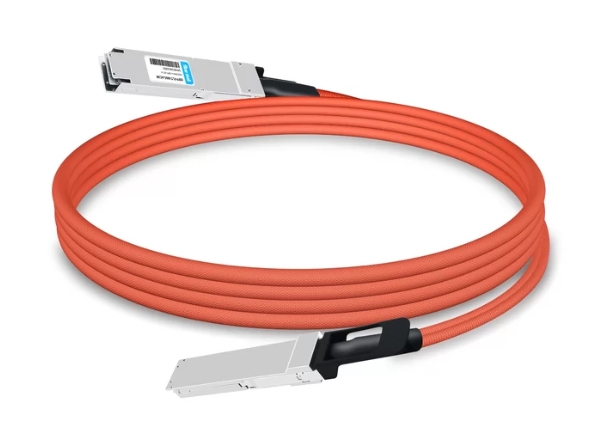
The Role of 800G in Data Transfer
High-performance computing and cloud environments are significantly powered by 800G technology, which is considered the backbone of such systems. This development came about to cater to increasing amounts of data being transmitted due to factors like artificial intelligence, 5G networks, and even cloud computing. How this works is that there are many lanes used during transmission, and each lane has a high bit rate, so when you add them up, they give you a total of 800 Gbps.
Additionally, these systems employ advanced modulation schemes like PAM4 (Pulse Amplitude Modulation), allowing for higher data rates without necessarily having more physical infrastructures. In data centers where bandwidth requirements keep rising, finding means that can utilize what already exists efficiently while reducing the delays involved becomes critical. All in all, active copper cabling’s adoption of 800G technology increases network capabilities, trustworthiness, and efficacy within contemporary networking systems.
Technical Specifications
When evaluating 800G OSFP active copper cables, some specifications can be used to measure their performance in high-speed data transfer environments:
- Data Rate: This is the first specification. The data transmission rate has been set at 800 Gbps, achieved by having multiple lanes working simultaneously.
- Physical Layer Interface: In most cases, these cables conform to the Octal Small Form-Factor Pluggable (OSFP) connector standard, which allows for high-density connections within data centers and is also compatible with Infiniband NDR configurations.
- Modulation Technique: PAM4 modulation uses higher data rates without increasing bandwidth requirements while doubling the bit rate compared to traditional signaling methods, thus enabling efficient signal transmission at increased speeds.
- Cable Length: Active copper cables come in different lengths, but they usually support distances not exceeding thirty meters, where optimal performance can be achieved. This is critical in maintaining signal integrity within a data center environment.
- Power Consumption: This feature makes it more suitable for large-scale deployments, including those needing OSFP Infiniband NDR Active Copper Cables, because its design aims towards energy efficiency, i.e., minimizing power used when operating at maximum capacity.
- Connector Type: OSFP connectors have sturdy locking mechanisms, which ensure secure connectivity under heavy operational demands and stability during high-performance applications.
Such specifications provide guidelines for network architects and engineers seeking effective solutions in modern IT infrastructures, thereby fostering the scalability necessary for emerging technological challenges.
Interoperability With Other Transceivers
For smooth data transmission across various network environments, it is critical to ensure interoperability among different transceivers, especially when using OSFP Infiniband NDR Active Copper technologies. Compatibility has been a main focus in the design of modern transceivers, including those that meet the OSFP standard, which enables them to work with different types of optical as well as copper transceivers. Generally, this compatibility is achieved through standardized protocols governing physical and data link layers like Ethernet standards (IEEE 802.3) and industry-specific requirements. In addition, several manufacturers of transceivers offer detailed compatibility lists while also supporting multi-vendor solutions aimed at helping network engineers select the right components for reliable performance across combined systems with minimal latency. Therefore, knowledge of specific vendor guidelines coupled with adherence to industry standards can greatly improve interoperability among complex network architecture’s transceivers.
Key Standards and Compliance for OSFP Active Copper Cable
OSFP active copper cable adheres to standards set by organizations like the IEEE and MSA (Multi-Source Agreement), ensuring interoperability and performance. For instance, compliance with IEEE 802.3ck for electrical interfaces guarantees that OSFP active copper cable can integrate with a wide range of switches and routers. FiberMall’s OSFP active copper cable solutions are rigorously tested to meet these standards, providing peace of mind for deployments in high-stakes environments.
Benefits of Using OSFP Active Copper Cables
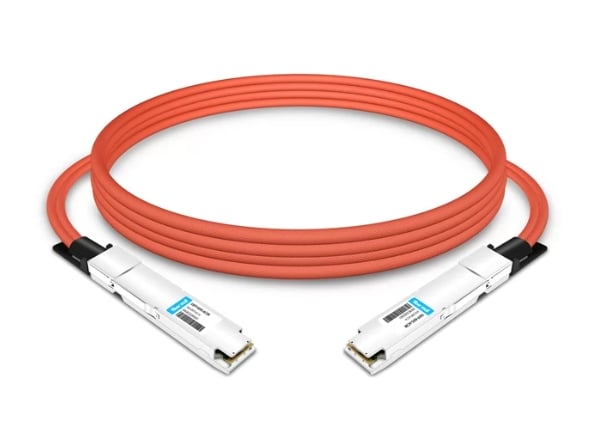
Enhanced Data Rates with 800G
Evolving from 400G and 200G frameworks, the deployment of 800G technology marks a major breakthrough in data transfer capabilities that addresses higher bandwidth requirements and faster network speeds. These systems are capable of sending information at a rate of 800 gigabits per second, which makes them suitable for handling the rapid increase in data traffic caused by cloud computing, data center interconnections, and high-performance computing applications. Typically used by 800G solutions are sophisticated modulation techniques like PAM4 (Pulse Amplitude Modulation), where multiple bits can be transmitted per symbol thereby effectively doubling the data rate over a certain frequency range when compared to earlier generations. Furthermore, OSFP (Octal Small Form-factor Pluggable) transceivers not only improve connectivity and bandwidth but also enable seamless scalability within the network infrastructure. By adopting this technology in their networks, organizations will optimize performance and reduce total ownership costs by minimizing physical connections required and energy consumption.
Cost-Efficiency of ACC
Active Copper Cables (ACC) are an economical option for high-speed data transfer in contemporary network architectures. Unlike traditional optical fiber systems which require extra components like transceivers and complicated installation procedures, ACC makes it easy to set up by including all necessary electronics right inside the cable itself. This design cuts down on overall system costs by removing expensive optical transceiver modules from consideration altogether. Moreover, compared to other types of cabling solutions, ACC has lower maintenance costs and a longer lifetime because environmental factors less influence its performance. Hence these features make it attractive for cost-conscious companies that want to improve their networking capabilities without breaking the bank. In addition, organizations can realize upgraded bandwidth benefits with minimal downtime since simplified installation allows faster deployment.
Integration with Existing Network Infrastructure
Careful preparation and execution are necessary when incorporating new network technologies, such as 800G systems and Active Copper Cables (ACC), with existing infrastructure. To determine compatibility and scalability factors, enterprises must comprehensively assess their current network architecture. In order to reduce risk, many organizations choose a phased migration approach which ensures that critical operations do not experience any interruptions during the shift. Furthermore, software-defined networking (SDN) can improve integration by providing dynamic resource allocation capabilities while also simplifying management across multiple different types of systems, including those using 50G and higher DAC cables. It is important to make sure that proper cabling pathways align with existing equipment when deploying ACC in order for performance reliability to be maintained. Ultimately, successful integration enhances present capabilities but also positions the organization for future tech advancements.
Comparing OSFP Active Copper Cable to Other Interconnect Solutions
When choosing interconnects, OSFP active copper cable stands out against alternatives like AOC (Active Optical Cable) or DAC. Unlike AOC, which uses fiber for longer reaches but at higher costs, OSFP active copper cable offers a budget-friendly option for distances up to 15 meters with similar performance. Compared to passive DAC, OSFP active copper cable provides better signal integrity over extended lengths. FiberMall’s OSFP active copper cable lineup excels in these comparisons, delivering superior value for data center operators.
Differences Between DAC and Active Copper Cables
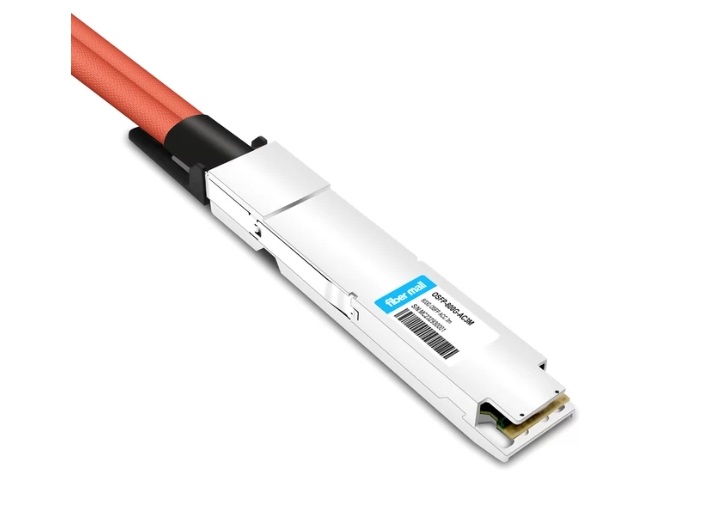
OSFP DAC vs Active Copper: A Comparative Analysis
Several important factors come into play when it comes to OSFP Direct Attach Copper (DAC) cables and Active Copper Cables (ACC). In terms of cost, ease of use, and short-distance connections in data centers, OSFP DAC cables are known for their efficiency. They utilize PAM4 technologies and QSFP56 to make a high-density application more suitable where space is tight, or budgets are limited. Their maximum range is usually around 7 meters, which makes them unsuitable for wide networks.
Active Copper Cables, on the other hand, have advanced technology that allows them to cover distances greater than 30 meters while still ensuring that there is no signal interference. Therefore they can be used over larger areas as well as different environments because they do not suffer from the same problems with signals becoming weaker after being transmitted through wire like passive types do when used at long ranges due to attenuation. Additionally, ACCs will support higher data rates, making them adaptable to changing demands in networking infrastructure over time.
Thus, organizations should take into account various aspects such as distance requirements, cost-effectiveness, and specific needs of the network environment before choosing between OSFP DAC and Active Copper Cables so that what they select aligns best with operational objectives.
Use Cases for Each Cable Type
OSFP DAC Cables
OSFP DAC cables are very popular for short-distance connections, especially between switches and servers, where costs are critical in data centers. Their plug-and-play design allows them to be quickly deployed in high-density environments, making them an excellent option for setups that require low latency over minimal distances. Furthermore, they suit dynamic workloads needing fast and reliable connections without necessitating extra devices.
Active Copper Cables (ACC)
In the distribution or core layers of a network, Active Copper Cables can be used to maintain data integrity across longer distances, such as between switches. They connect racks within large data centers while resilient against signal degradation during wide deployments. Also, high-performance computing and media applications requiring seamless transmission at high data rates can benefit from ACCs since video processing and other bandwidth-intensive tasks usually occur here.
How to Install and Maintain an OSFP Active Copper Cable System
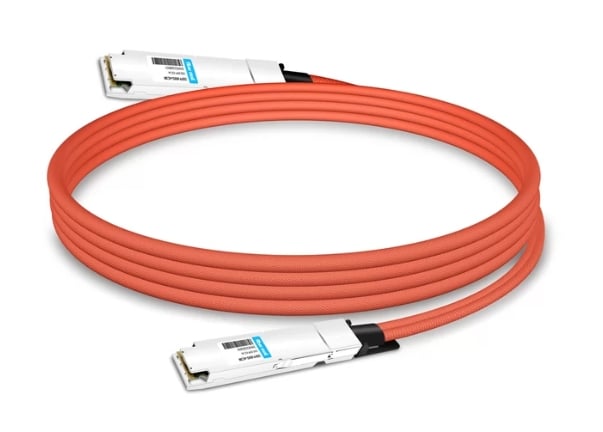
Installation Tips
- Preparation & Planning: Before starting the installation, evaluating your environment’s layout is essential. Identify paths for cable runs while keeping away from high-electromagnetic devices. All tools and equipment should be at hand, including those used for cable management, so everything remains tidy during setup.
- Cable Handling: OSFP DACs and Active Copper Cables must be treated gently when being worked on, as they can kink or bend beyond their radius if not handled properly. Physical stress may result in performance problems and shorter life spans; therefore, protect them against possible damages throughout the installation.
- Connector orientation: Connectors need to be installed carefully, as incorrect alignment could lead to signal loss or equipment failure due to improper connections between ports of OSFP DACs and ACCs.
- Testing & Verification: Conduct thorough tests after completing an installation process to verify whether there are any faults within the connections made. Use suitable testing devices capable of measuring quality signals sent through cables, which must meet the standards needed by your network’s operational demands.
- Routine Maintenance: Regular inspections and maintenance checks are important because they help identify early potential issues. Monitoring cable performance and the environment will minimize risks associated with interference or physical damage, thus extending the effective lifetimes of both OSFP DACs and Active Copper Cables.
Best Practices for Maintenance
- Regular Monitoring: Occasionally, check cables and connectors for damage or stress. If issues are dealt with immediately, you can avoid larger complications down the line while keeping your system working as it should.
- Environmental Control: The space where cables are installed impacts their longevity. So, make sure the temperature is right and humidity levels aren’t too high. Cables should never be next to heat sources like heaters or places that vibrate a lot.
- Cable Management Solutions: Tangling happens easily when there isn’t a good organization, which puts more strain on the wires. To prevent this, use trays, ties, and organizers that keep cords in their designated spaces. This will help with maintenance and allow air to flow through them so overheating doesn’t happen.
- Documentation and Tracking: For easy troubleshooting later on, always maintain complete records of cable installations, configurations, etc. This way, everyone involved knows what happened before and where things currently stand as far as network infrastructure goes.
- Upgrade and Replace: As technology advances, stay up-to-date by checking if your DACs still meet today’s standards, such as 400G/200G systems. Then, replace any old parts ASAP before they disrupt service again!
Troubleshooting Common Issues
To diagnose and troubleshoot OSFP DAC and Active Copper Cables connectivity issues, here are some steps that can be followed:
- Check Physical Connections: For the first step, check all cable connections on both ends to ensure they are firmly plugged in. Loose connections can lead to intermittent or total loss of signal, especially in high-speed applications such as those using DAC cables or OSFP Infiniband NDR technologies.
- Test with Known Working Equipment: Alternatively, you can replace the current wires with working ones if problems persist so as not to rule out defective wires. This will help determine whether the problem is within the cables or somewhere else in the network.
- Monitor Signal Integrity: Network monitoring tools should be used here to check the quality and performance of signals. Look at aspects like latency, error rates, and signal losses, which can indicate faulty cabling or connected devices.
- Review Configuration Settings: Device configurations must be reviewed to confirm compatibility and appropriate settings for specific wiring. All related protocols should also be complied with because misconfiguration may interrupt function, particularly in advanced systems such as those utilizing OSFP Infiniband NDR technologies.
- Environmental Factors: Assess the location of the installation to consider any possible interfering factors or damaging conditions. Proper air circulation could reduce overheating risks, while temperature control prevents physical damage.
These troubleshooting processes enable network professionals to determine common problems affecting these types of cables, thus ensuring they work efficiently throughout their lifetime.
Reference Sources
Frequently Asked Questions (FAQs)
Q: What does an 800G OSFP Active Copper Cable mean?
A: The 800G OSFP Active Copper is a fast data cable primarily used in data centers supporting InfiniBand NDR and Ethernet protocols up to 800G. It uses advanced active copper technology to provide high bandwidth over short distances efficiently.
Q: How do you connect OSFP to OSFP?
A: Two OSFP ports can be connected directly using an OSFP cable called OSFP-to-OSFP connectivity. This configuration is usually found in high-density data centers to guarantee a quick exchange of information at low latency.
Q: What is the maximum distance these cables can support?
A: The maximum distance that the 800G OSFP Active Copper Cables can be supported differs from one specific product or application to another; however, they generally allow for up to five-meter-long cables and often outperform standard DAC cables.
Q: Can I use my 800g of active copper cables with InfiniBand NDR?
A: You can use your 800g of active copper cables with InfiniBand NDR technology, allowing fast networking and low-latency communication within data center settings.
Q: What’s the difference between active optical and copper cables?
A: Active optical cables (AOC) are fiber optics, while active copper cables (ACC) involve metal wires alongside built-in electronics that amplify signals. These cables are more suitable over shorter ranges than their counterparts, and they work better across longer spans requiring greater capacities.
Q: Can other form factors, such as QSFP28 or QSFP-DD, work with these cables?
A: No, the 800G OSFP Active Copper Cables are only for OSFP ports. Without the right adapters or interconnect solutions, they might not be directly compatible with other form factors like QSFP28 or QSFP-DD.
Q: Where do I buy 800G OSFP Active Copper Cables?
A: Various suppliers and manufacturers specializing in data center hardware sell 800G OSFP Active Copper Cables. These include authorized distributors of HPE InfiniBand and Amphenol, among others. You can also find them at specific tech stores like HPE Store US.
Q: What protocols are supported by these cables?
A: These cables support a range of high-speed data transmission protocols, including InfiniBand NDR and Ethernet, allowing up to 800G aggregate bandwidth per cable assembly.
Q: Are there any particular applications for using an 800 Gbps OSFP Active Copper Cable?
A: These types of wires are often used within environments requiring low latency, high bandwidth networking setups; this includes but is not limited to high-performance computing operations or data centers where short (<5m) cabling may suffice.
Q: What advantages do twin-port and twinax provide in an 800-gigabit setup?
A: Twin-port designs improve thermal management while increasing connection density; twinax offers superior signal integrity over shorter distances, making it ideal for use within an eight-hundred-gigabit environment due to its enhanced performance capabilities during fast data transfers.

